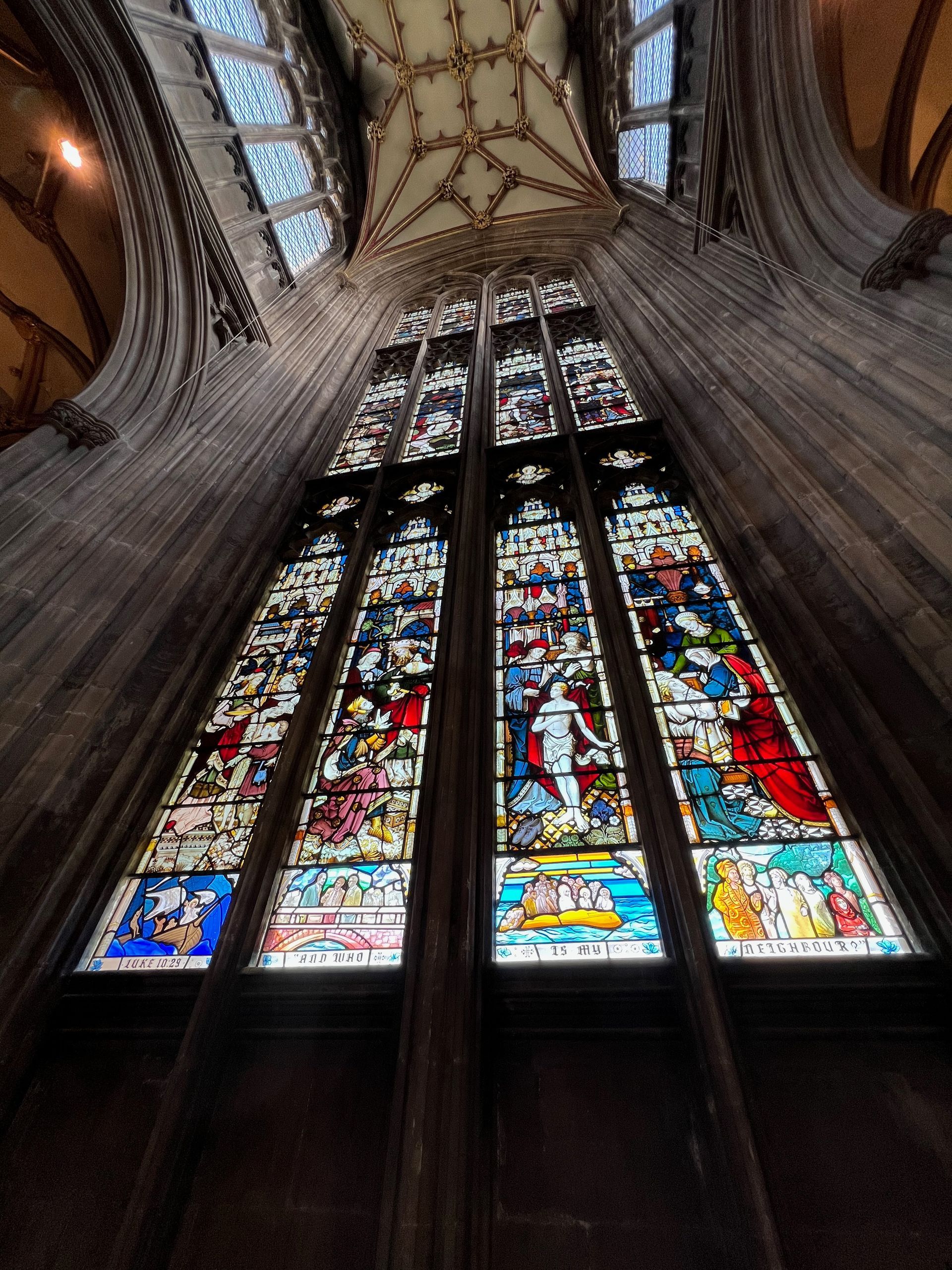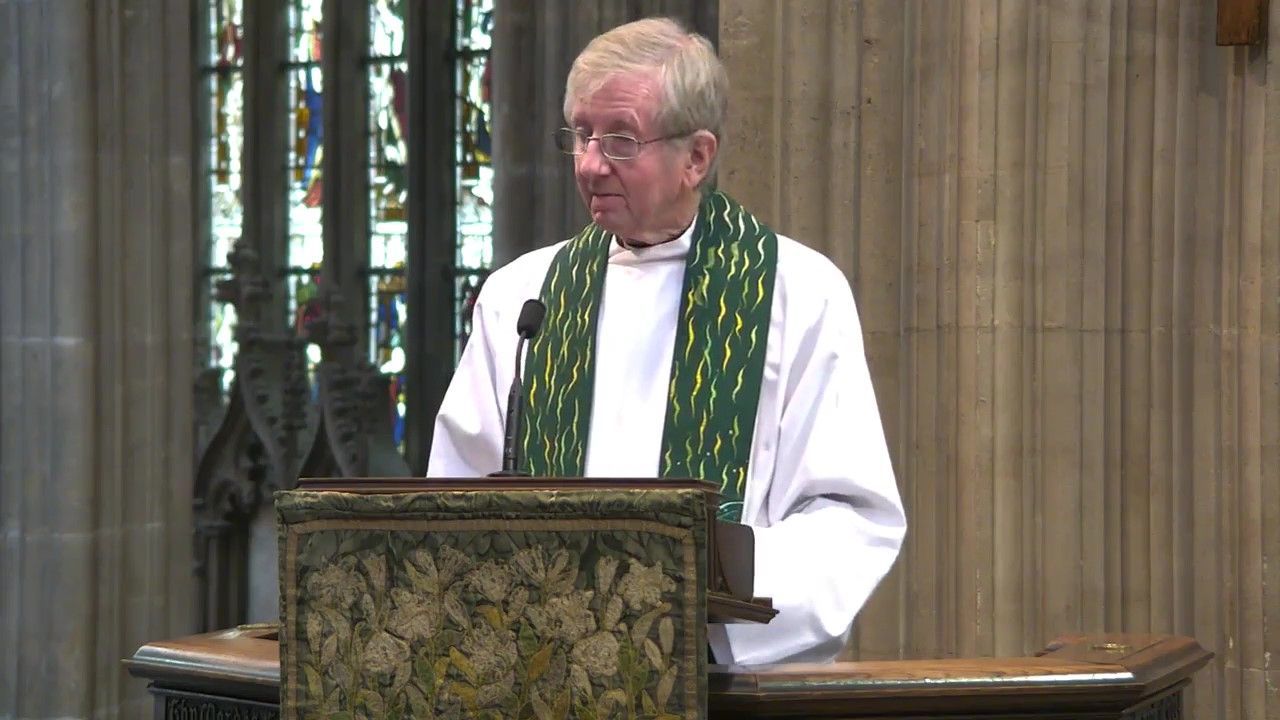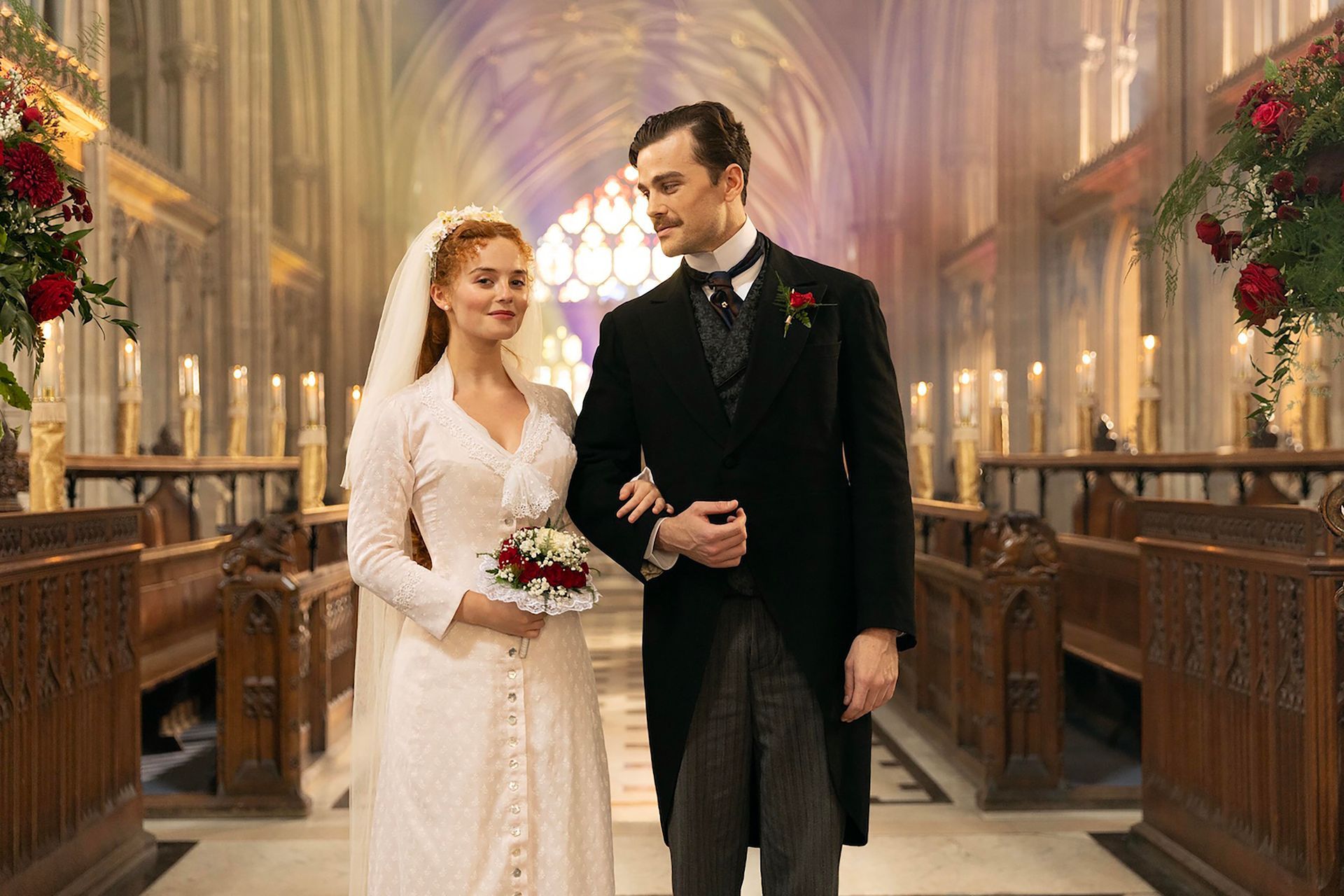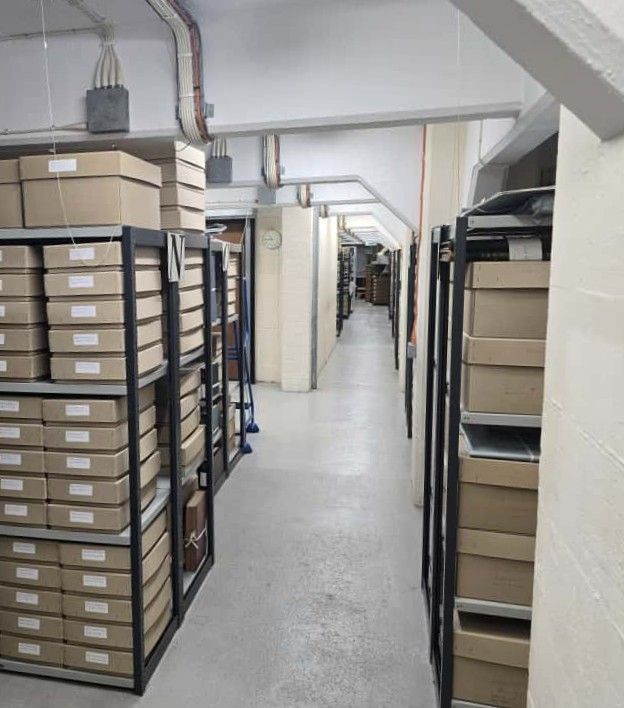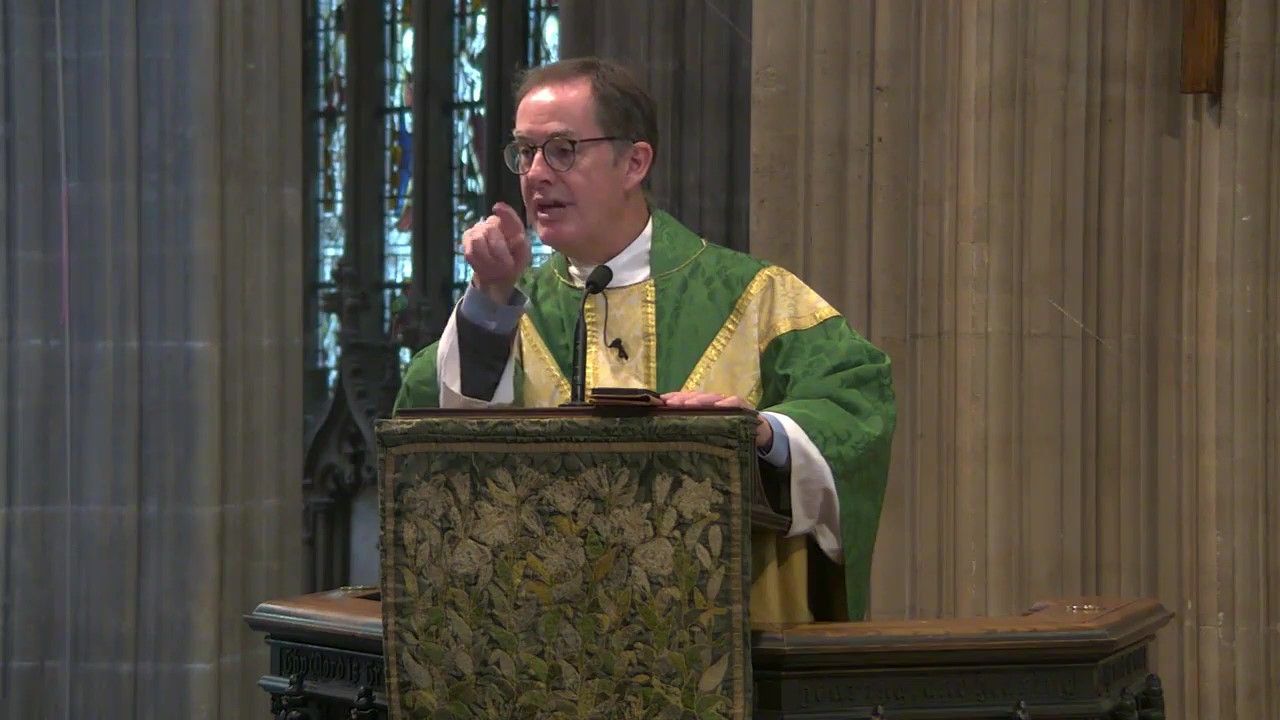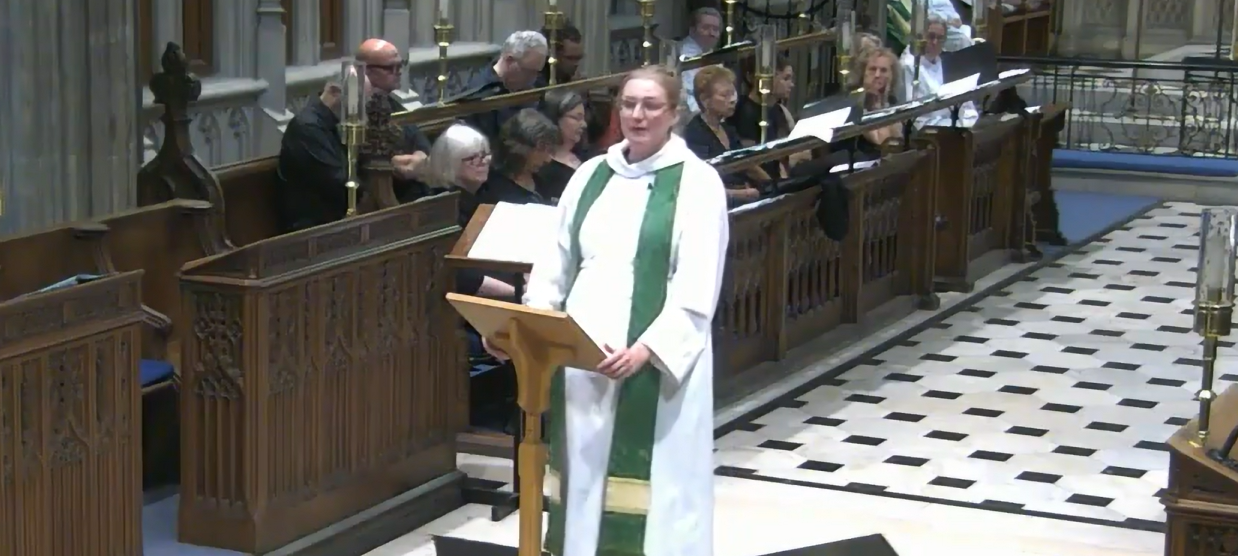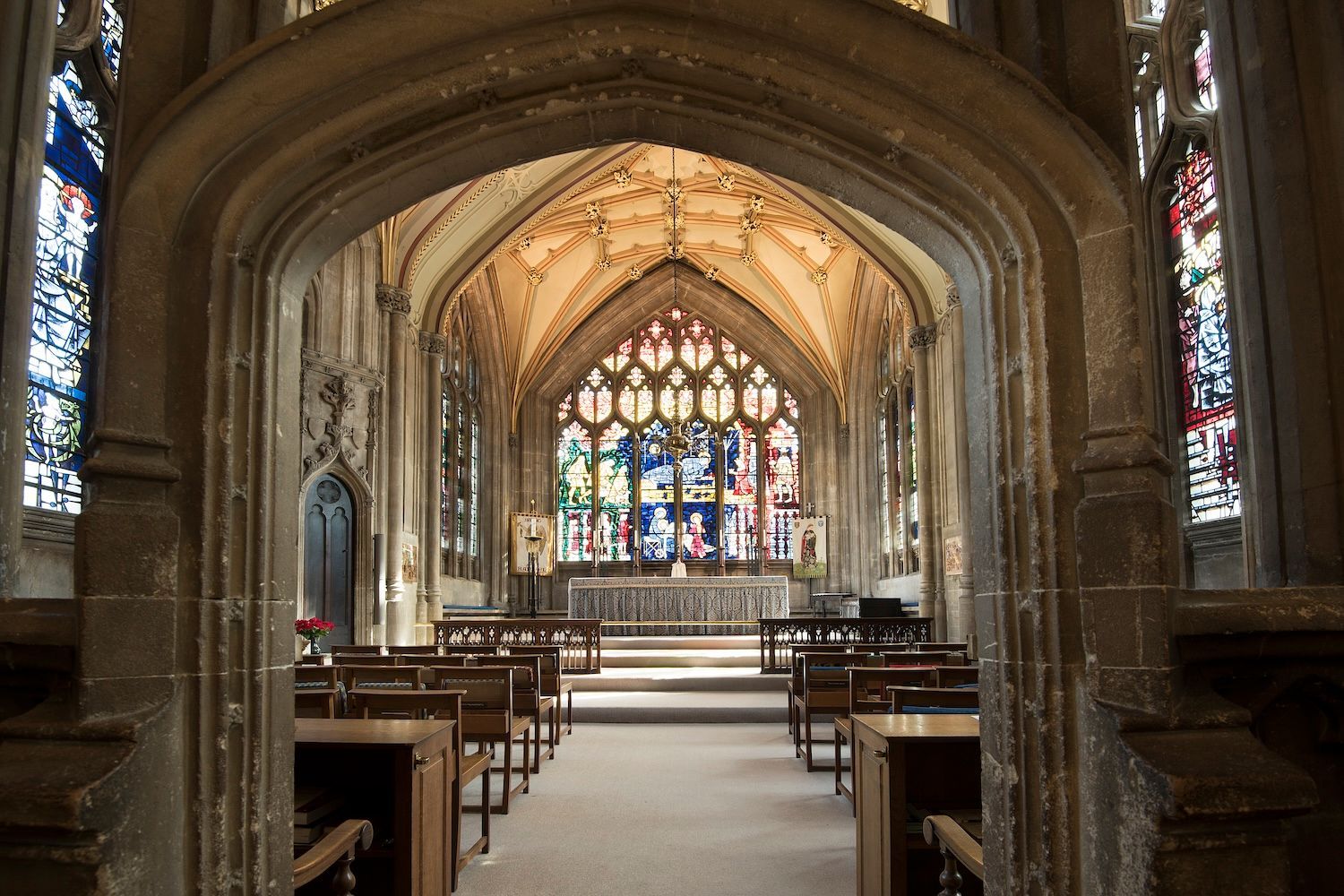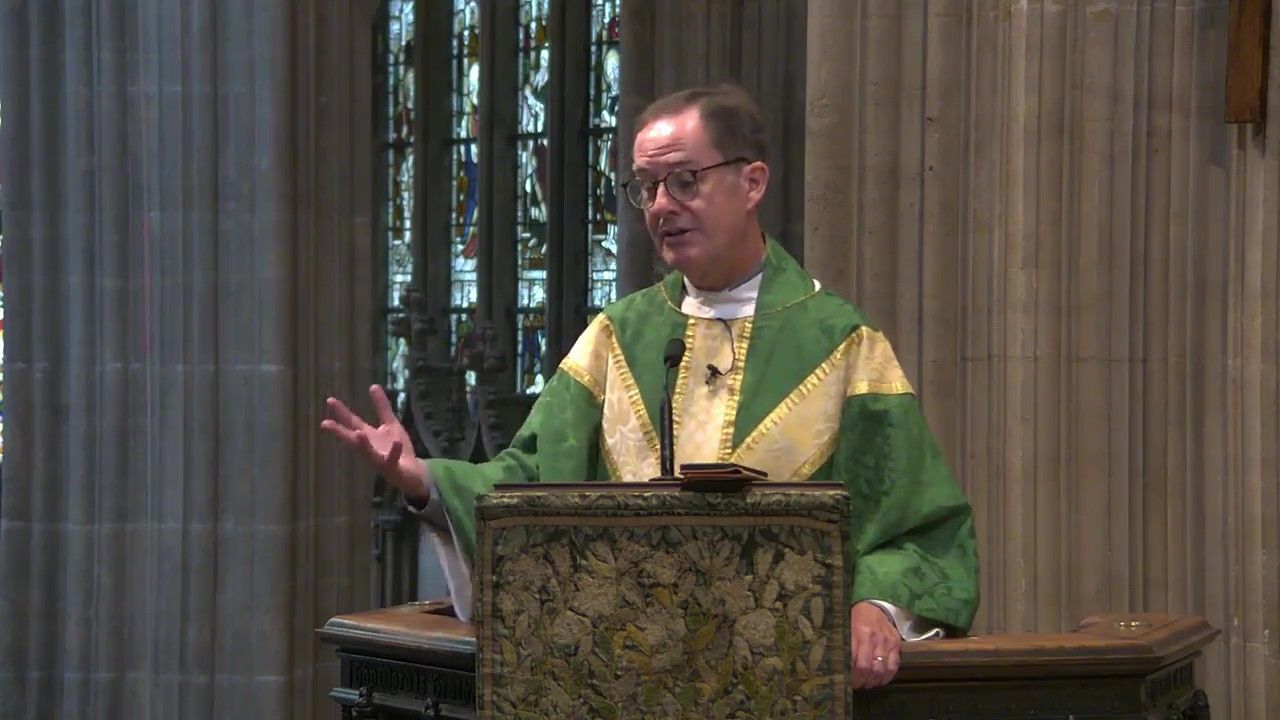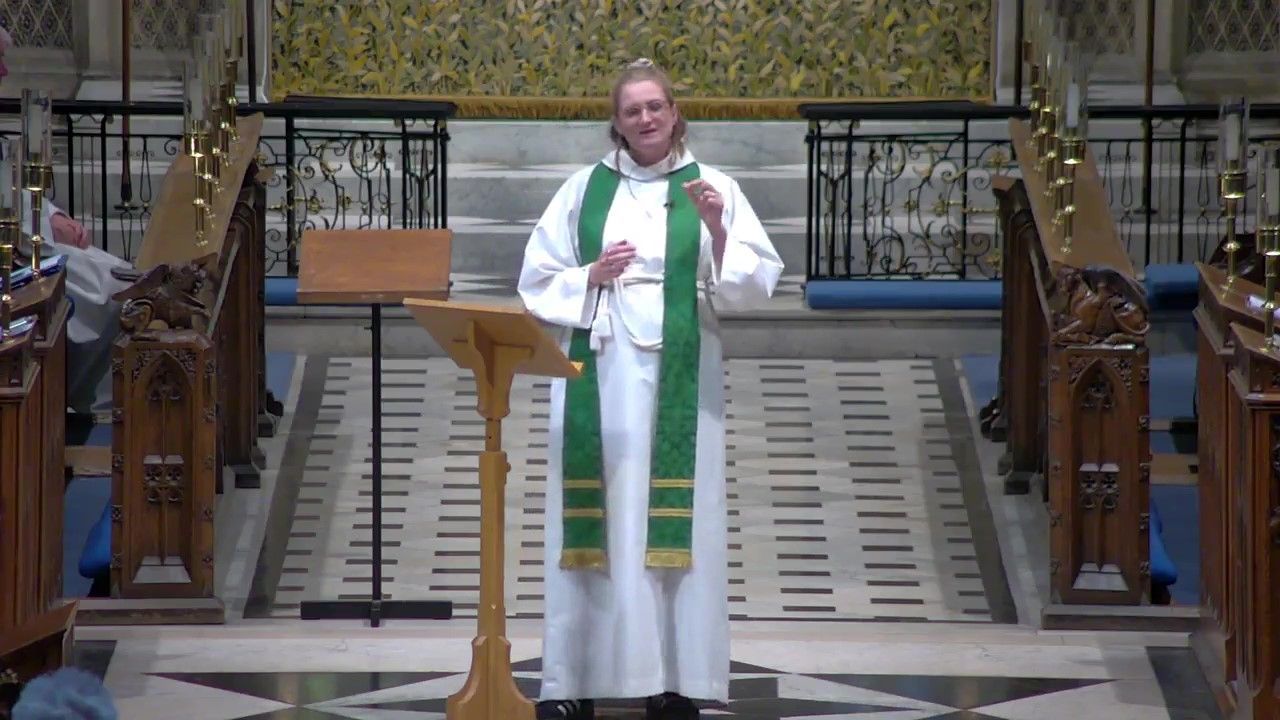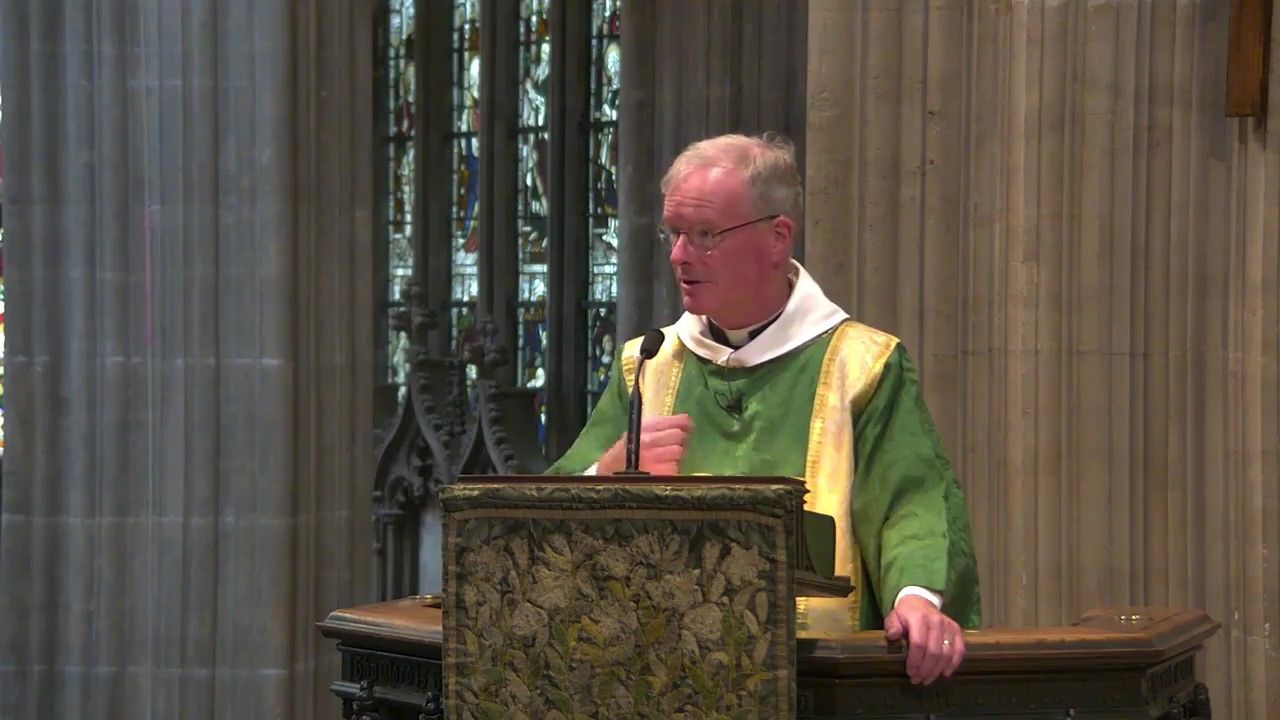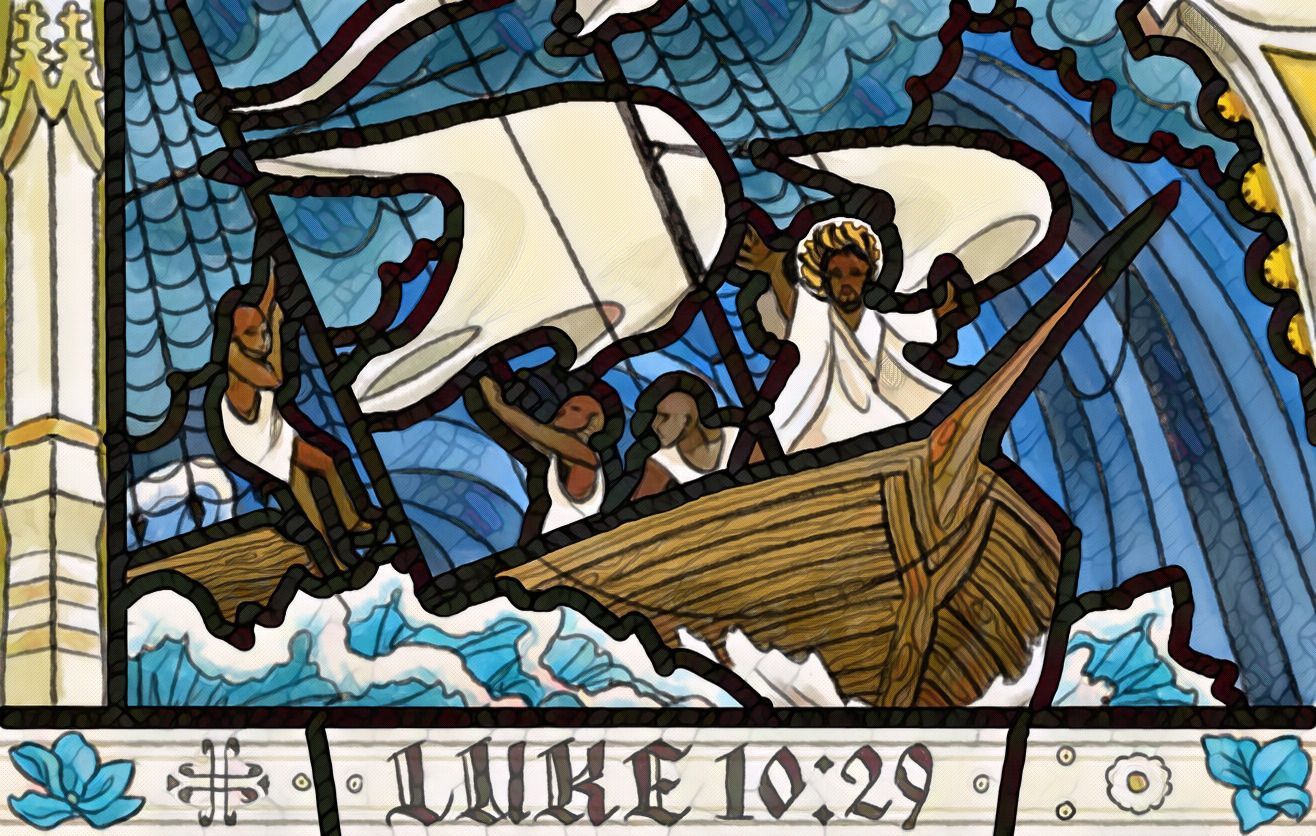
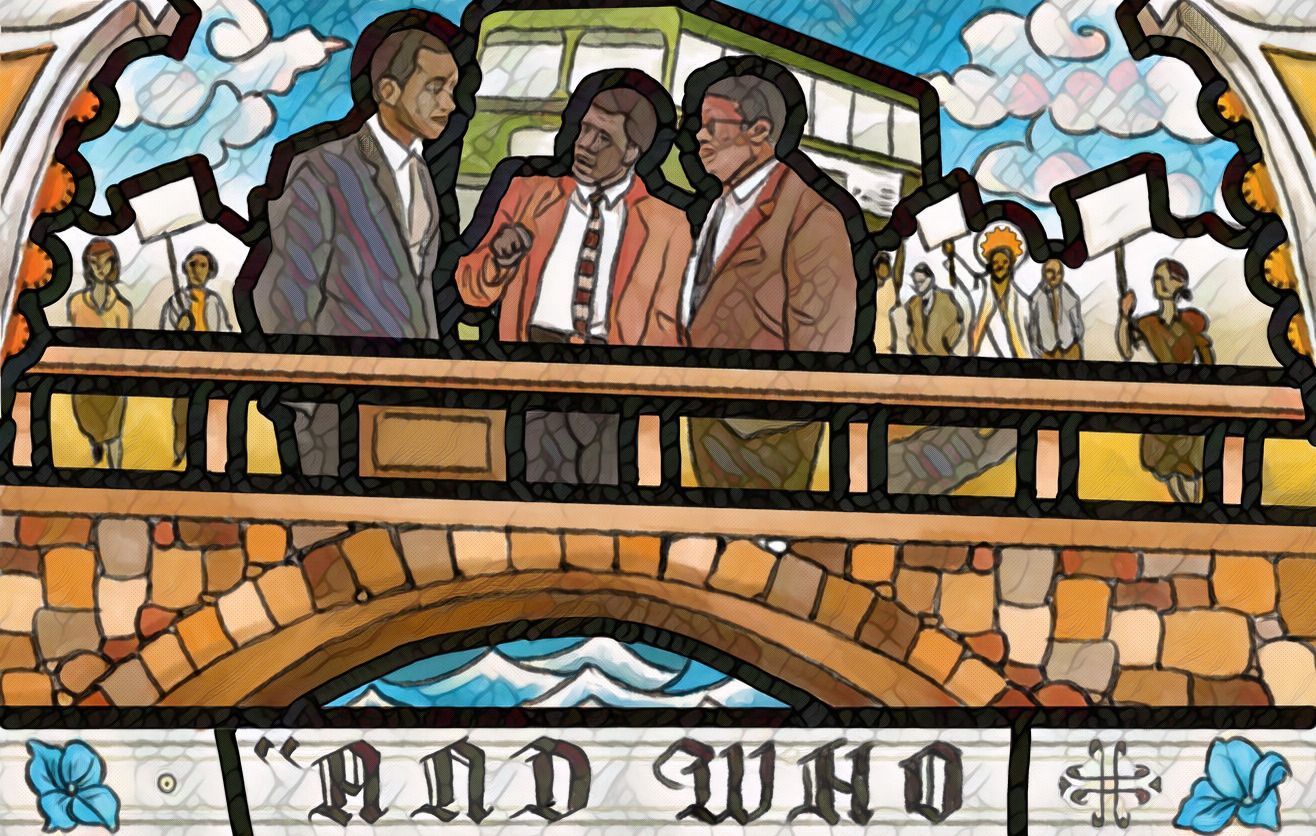
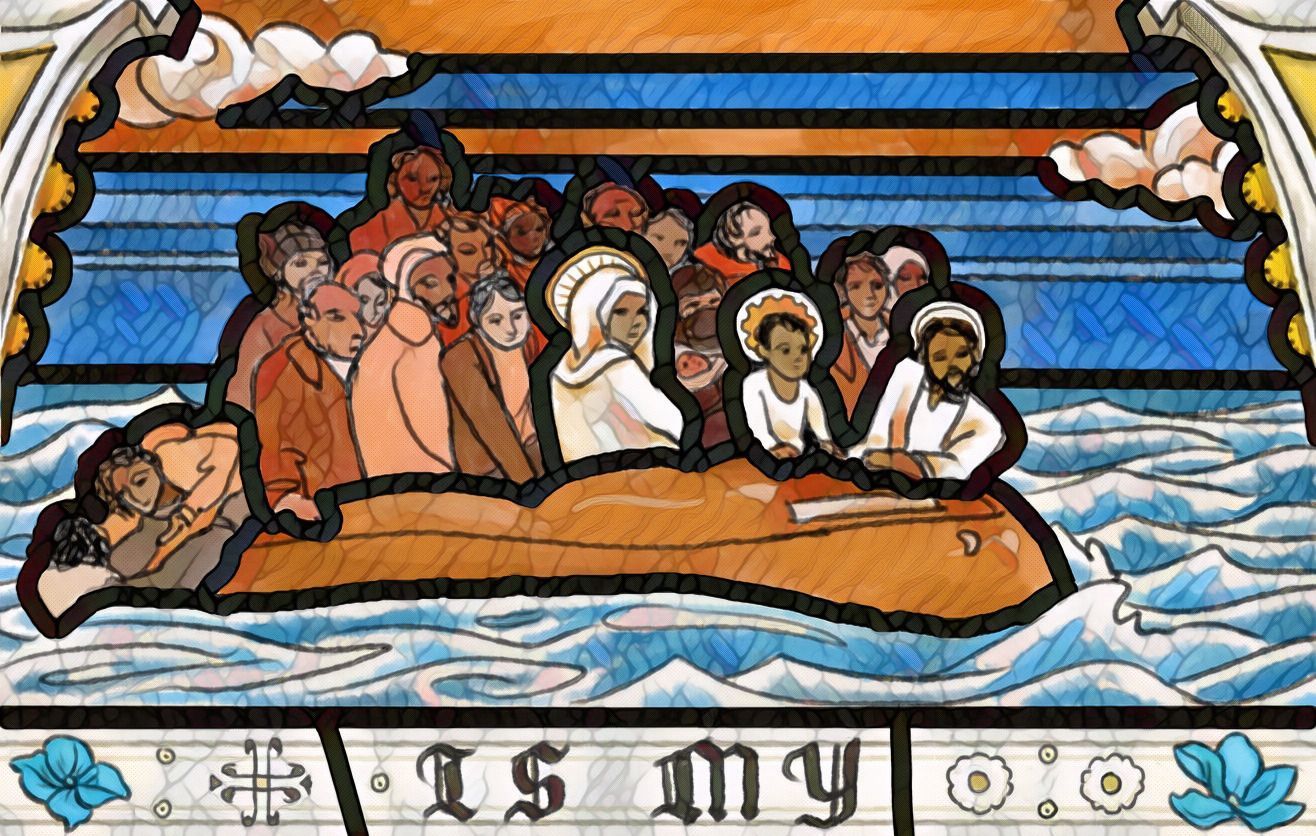
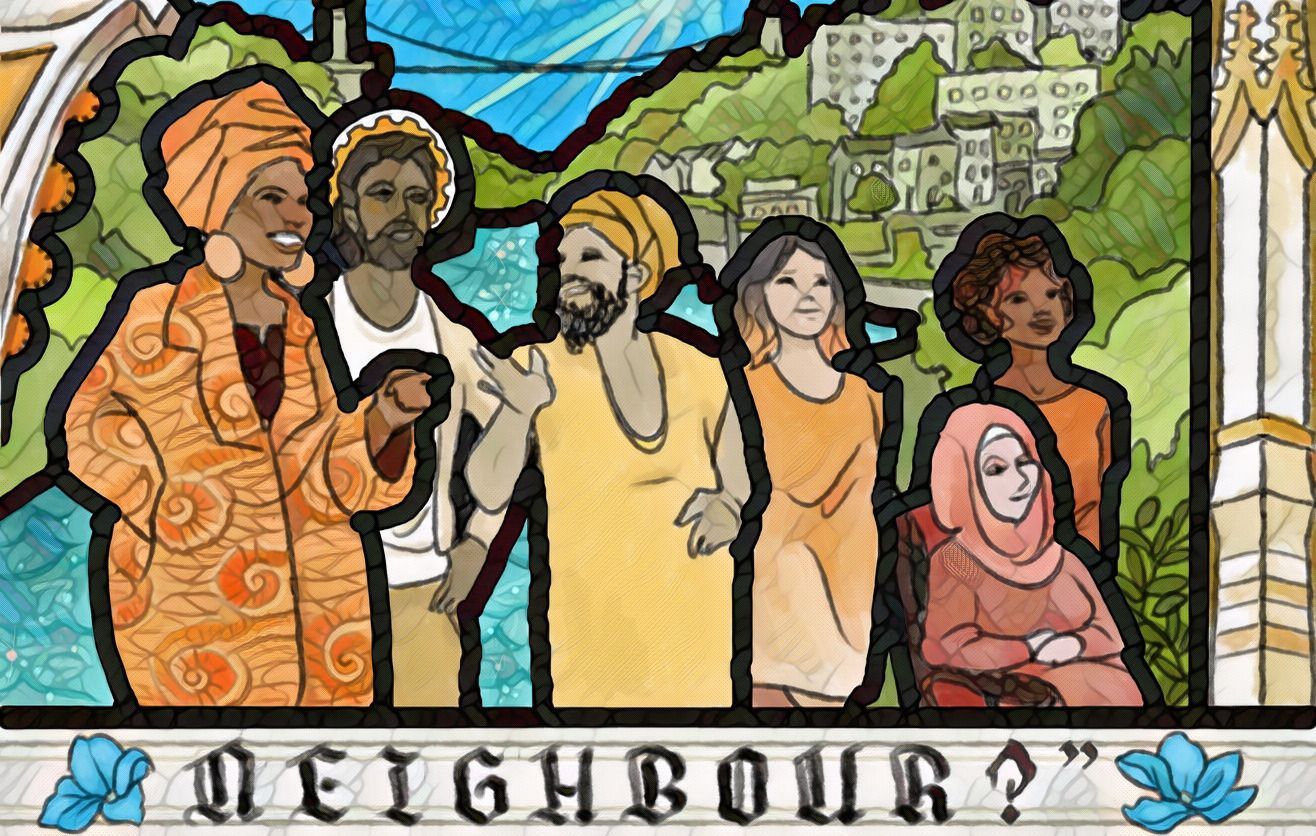
And who is my neighbour?
New stained glass for St Mary Redcliffe
Background
In June 2020 the statue of Colston was tipped into the harbour following the death of George Floyd in the USA. By then the church had already stopped using artefacts that were not aligned with its values of compassion, inclusivity and justice. The Victorian glass that was removed quoted Colston’s family motto of "Go thou and do likewise". The quote comes from the end of the story of the Good Samaritan which is pictured in the main window. The new panels will also have a quote from the same story: And who is my neighbour? Each of the four new panels encourage the viewer to consider that question for themselves.
Who was Edward Colston?
Edward Colston was a senior figure in the transatlantic trafficking of enslaved Africans. He made his fortune trading in human suffering. Accordingly, the presence of a memorial to Colston has been described by the Chancellor in his judgement as, “not only grotesque but entirely contrary to the Gospel command to love one another”.
Colston was philanthropic towards Bristol but there is no evidence to suggest that his philanthropy arose from any sense of regret or penitence. As a slave trader and senior official in the Royal African Company from 1680 to 1692, he is estimated to have been involved in the transportation of over 84,000 slaves from West Africa to the Caribbean and Americas.
St Mary Redcliffe’s stained-glass design competition
During 2021, the church ran an open competition for four new designs to replace the four panels of glass that commemorated Colston. The purpose of the competition was to:
· help us remember and reconcile with our past
· enable everyone to encounter the gospel
· promote a sense of hope in our shared future
St Mary Redcliffe requested creative and imaginative designs that reflected the question that prompted Jesus to tell the story – ‘Who is my neighbour?’ The designs also needed to work well within the whole window and complement the architecture of this area of the church.
Dozens of people from a variety of backgrounds entered the competition and five shortlisted designs were displayed during an exhibition that took place at St Mary Redcliffe during the summer of 2021. Members of the public were invited to provide feedback on the five designs and their comments were included in the decision-making process.
The winning entry
Local Junior Doctor Ealish Swift won the competition with four designs that referred to Bristol’s rich multicultural past and present.
On winning the competition, Ealish said:
"I am deeply honoured that my design has been chosen for this wonderful space that means so much to me. I'm thrilled that my design seemed to resonate so much with the local community and I hope everyone will come to visit to see the final piece and experience everything this wonderful church, and community, has to offer!"
Permission to install the designs
In order to actually install the new windows, the church had to get permission from The Consistory Court of The Diocese of Bristol.
As part of its submission of evidence the church presented information about Edward Colston and made the case that continued commemoration of a slave-trader though stained glass containing the phrase ‘go thou and do likewise’ was inappropriate.
In his judgement Justin Gau, Chancellor of the Diocese of Bristol, stated that:
“The Church of England and the historical behaviour of this parish Church in excusing the life of Colston have a journey of repentance to make. To excuse or ignore the slave trade is a sin. To encourage parishioners to look at a memorial to a slave trader and to be encourage to ‘Go thou and do likewise’ is not only grotesque but entirely contrary to the Gospel command to love one another…”
In his judgement, the Chancellor agreed that the original Victorian panels hinder the church from its mission of “singing the song of faith and justice”. The new panels, which depict Jesus “in multiple ethnicities to counter the anglo-centric narrative of ‘white Jesus’ ” are designed by local doctor Ealish Swift. These are the first images of a non-white Jesus to be installed in St Mary Redcliffe Church and join two other windows which feature non-white characters.
A significant step forward
The ruling marks an important step in St Mary Redcliffe’s journey towards becoming a church that is welcoming to all members of the community, regardless of ethnicity, creed, gender or sexual identity and in realising it’s missional aspiration to sing the song of faith and justice.
These aspirations are central to St Mary Redcliffe’s multi-million pound facilities development initiative, Project 450, which will create significant new visitor, exhibition and community spaces around this nationally significant church. The church hopes to welcome around 100,000 visits in 2023.
The Vicar of St Mary Redcliffe, Canon Dan Tyndall says:
“The toppling of Edward Colston turned an international spotlight onto Bristol and its entangled history profiting, as it most certainly did, from human trafficking. The opportunity to reimagine how we can tell the story of the Good Samaritan was grasped enthusiastically by the church. By then we had already laid aside a cope with a Moor’s Head symbol, a modern nativity set had been commissioned to replace a staid Victorian model and we had welcomed the artist collective alldaybreakfast with their installation on journeys, helping us reflect on both modern and historic slavery. As part of our response we have grown our social action programme and now run Redcliffe Community Hub in a local shop unit, providing information, advice, clinics and, throughout the winter, a warm space in one of the most deprived neighbourhoods in the country."
